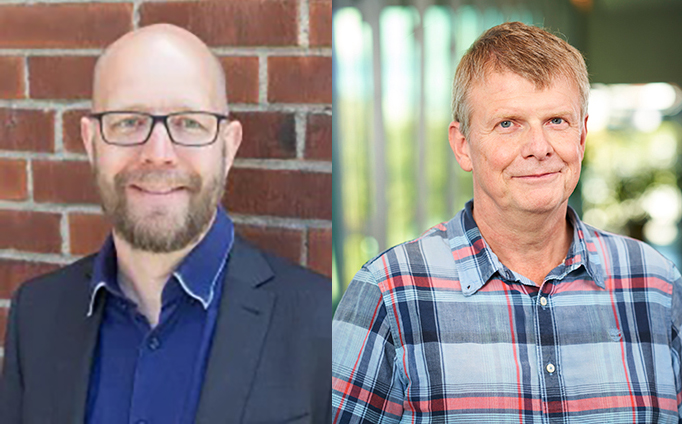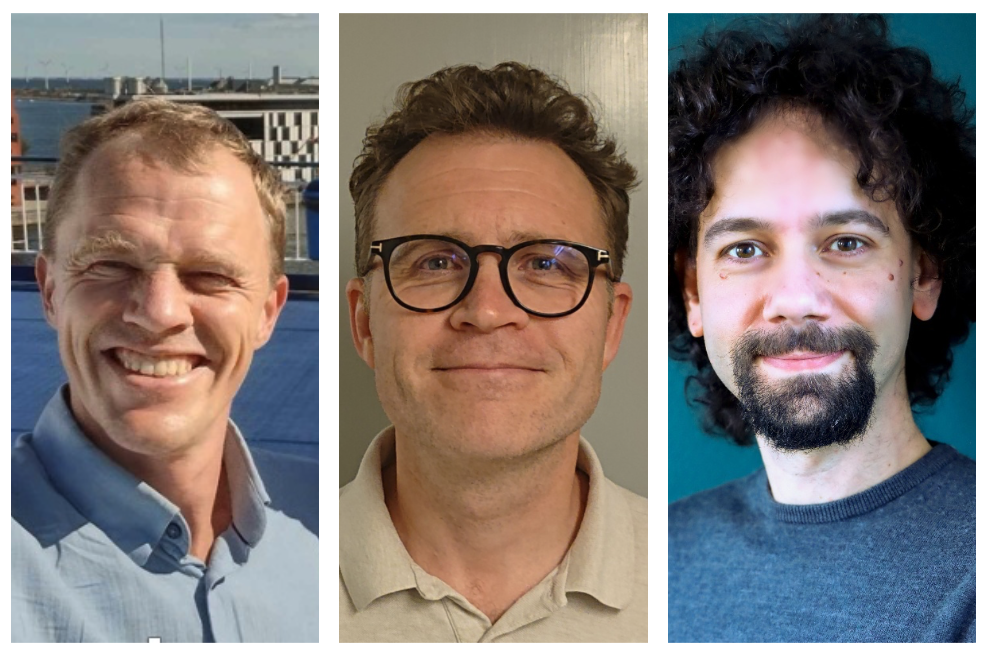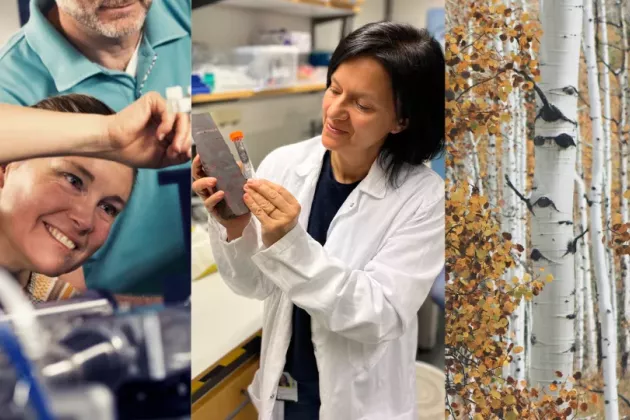
LTH:s profilområde: Avancerade ljuskällor
Genom att utveckla nya lasrar och fotonkällorsamt skräddarsydda lösningar för tillämpad spektroskopi i olika miljöer, adresserar profilområdet samhällsutmaningar relaterade till klimatförändringar, miljöpåverkan och bekämpning av cancer och andra hot mot människors hälsa.
Standing on the foundation of world-leading photon science, we develop the non-intrusive photon technology that makes it possible to address societal challenges associated with health, environment and digitalisation.
Fokusområden
Measurement techniques based on laser light offer some unique features, such as non-intrusiveness, high spatial- and temporal resolution, and remote sensing- and imaging capacity. These features make laser diagnostics a very powerful and versatile tool for a multitude of applications within climate, environmental and clean-energy research.
- Diagnostic techniques are applied to measure key parameters in combustion processes based on renewable biofuels and future combustion concepts based on hydrogen, ammonia and metals.
- Application of laser-based remote sensing for monitoring green‐house gases and pollutants in the atmosphere.
- Optical monitoring of insects, of utmost relevance for promoting pollination, combatting spread of deadly diseases, and fighting agricultural pests.
- Ultrafast multidimensional spectroscopy for studies of natural and artificial energy conversion systems aiming at harvesting sunlight for climate‐friendly energy.
- A set of courses can be found here:
- Atomic and Molecular Spectroscopy
- Laser‐based diagnostics
- Biophotonics
- Spectroscopy and dynamics
- Molecular Spectroscopy‐Methods and Applications
The research within this area focuses on development of quantum technology, towards extremely powerful computers, intercept‐proof communications and hyper‐sensitive measuring instruments. Two of the researchers in the profile area are PIs in The Wallenberg Centre for Quantum Technology (WACQT).
- Application of rare earth ion doped inorganic crystals for quantum sensing and quantum communication.
- Application of attosecond science, consisting of studying entanglement in photoionization.
- Manufacturing high‐density chips in collaboration with the company ASML.
- A set of courses can be found here:
- Quantum information
- Light‐matter interaction
In this focus area we study the interaction between light and tissue and seek deeper understanding of basic optical interactions in tissues. Novel optical and imaging techniques are developed and ultimately deployed in clinical applications.
- Tumour detection and treatment using lasers in collaboration with Spectracure (spin‐off company).
- Development of optical techniques to diagnose lung function of premature babies as well as COVID patients in collaboration with Neola Medical (spin‐off company).
- Development of optical diagnosis of common infections, such as sinusitis and otitis.
- Photoacoustic imaging for real‐time high‐resolution images that visualize the spatial distribution of endogenous tissue chromophores on the molecular level.
- Development of novel methods to provide new clinical information for breast cancer and giant cell arteritis, as well as for skin cancer outlining.
- Research on designing indoor lighting to promote health.
- A set of courses and Masters programmes can be found here:
- Physics for Biomedicine
- Biophotonics
- Medical Optics
The interaction of light with matter has far-reaching consequences for both science and technology. Within this focus area we study the fundamental interaction with light on ultrafast time scales, to monitor and ultimately control energy transfer and conversion mechanisms in matter.
- Smaller powerful accelerator that can be used for oncology and radiology.
- Develop the technology for future Free-electron lasers.
- Develop small scale soft X-ray sources suited for metrology and other application in industry.
- Developing ultrafast memory technology with write speeds shorter than one picosecond.
- A set of courses and Masters programmes can be found here:
- Optics and optical design
- Lasers, Advanced optics and Lasers
- Modern X-ray Physics
- Introduction to synchrotron radiation based science
- Experimental methods and instruments in synchrotron radiation science
- Accelerators and Free-electron lasers
- Photon and neutron production for science
- Spectroscopy and the Quantum Description of Matter

Infrastruktur
The infrastructures involve several laboratories and research networks. Links below will open the infrastructures' websites.

Nobelpriset 2023
Nobelpriset i fysk 2023 tilldelades LTH:s Anne L’Huillier, professor i atomfysik och medlem i LTH profilområdet Avancerade ljuskällor.

Koordinatorer
Per Eng-Johnsson och Jörgen Larsson
Länkarna öppnas i Lunds universitets forskningsportal

Forskare och medarbetare
Forskare inom området Avancerade ljuskällor i Lunds universitets forskningsportal
Genom att utveckla nya lasrar och fotonkällorsamt skräddarsydda lösningar för tillämpad spektroskopi i olika miljöer, adresserar profilområdet samhällsutmaningar relaterade till klimatförändringar, miljöpåverkan och bekämpning av cancer och andra hot mot människors hälsa.
Standing on the foundation of world-leading photon science, we develop the non-intrusive photon technology that makes it possible to address societal challenges associated with health, environment and digitalisation.
Fokusområden
Measurement techniques based on laser light offer some unique features, such as non-intrusiveness, high spatial- and temporal resolution, and remote sensing- and imaging capacity. These features make laser diagnostics a very powerful and versatile tool for a multitude of applications within climate, environmental and clean-energy research.
- Diagnostic techniques are applied to measure key parameters in combustion processes based on renewable biofuels and future combustion concepts based on hydrogen, ammonia and metals.
- Application of laser-based remote sensing for monitoring green‐house gases and pollutants in the atmosphere.
- Optical monitoring of insects, of utmost relevance for promoting pollination, combatting spread of deadly diseases, and fighting agricultural pests.
- Ultrafast multidimensional spectroscopy for studies of natural and artificial energy conversion systems aiming at harvesting sunlight for climate‐friendly energy.
- A set of courses can be found here:
- Atomic and Molecular Spectroscopy
- Laser‐based diagnostics
- Biophotonics
- Spectroscopy and dynamics
- Molecular Spectroscopy‐Methods and Applications
The research within this area focuses on development of quantum technology, towards extremely powerful computers, intercept‐proof communications and hyper‐sensitive measuring instruments. Two of the researchers in the profile area are PIs in The Wallenberg Centre for Quantum Technology (WACQT).
- Application of rare earth ion doped inorganic crystals for quantum sensing and quantum communication.
- Application of attosecond science, consisting of studying entanglement in photoionization.
- Manufacturing high‐density chips in collaboration with the company ASML.
- A set of courses can be found here:
- Quantum information
- Light‐matter interaction
In this focus area we study the interaction between light and tissue and seek deeper understanding of basic optical interactions in tissues. Novel optical and imaging techniques are developed and ultimately deployed in clinical applications.
- Tumour detection and treatment using lasers in collaboration with Spectracure (spin‐off company).
- Development of optical techniques to diagnose lung function of premature babies as well as COVID patients in collaboration with Neola Medical (spin‐off company).
- Development of optical diagnosis of common infections, such as sinusitis and otitis.
- Photoacoustic imaging for real‐time high‐resolution images that visualize the spatial distribution of endogenous tissue chromophores on the molecular level.
- Development of novel methods to provide new clinical information for breast cancer and giant cell arteritis, as well as for skin cancer outlining.
- Research on designing indoor lighting to promote health.
- A set of courses and Masters programmes can be found here:
- Physics for Biomedicine
- Biophotonics
- Medical Optics
The interaction of light with matter has far-reaching consequences for both science and technology. Within this focus area we study the fundamental interaction with light on ultrafast time scales, to monitor and ultimately control energy transfer and conversion mechanisms in matter.
- Smaller powerful accelerator that can be used for oncology and radiology.
- Develop the technology for future Free-electron lasers.
- Develop small scale soft X-ray sources suited for metrology and other application in industry.
- Developing ultrafast memory technology with write speeds shorter than one picosecond.
- A set of courses and Masters programmes can be found here:
- Optics and optical design
- Lasers, Advanced optics and Lasers
- Modern X-ray Physics
- Introduction to synchrotron radiation based science
- Experimental methods and instruments in synchrotron radiation science
- Accelerators and Free-electron lasers
- Photon and neutron production for science
- Spectroscopy and the Quantum Description of Matter
Infrastruktur
The infrastructures involve several laboratories and research networks. Links below will open the infrastructures' websites.

Forskare och medarbetare
Forskare inom området Avancerade ljuskällor i Lunds universitets forskningsportal

Koordinatorer
Per Eng-Johnsson och Jörgen Larsson
Länkarna öppnas i Lunds universitets forskningsportal





